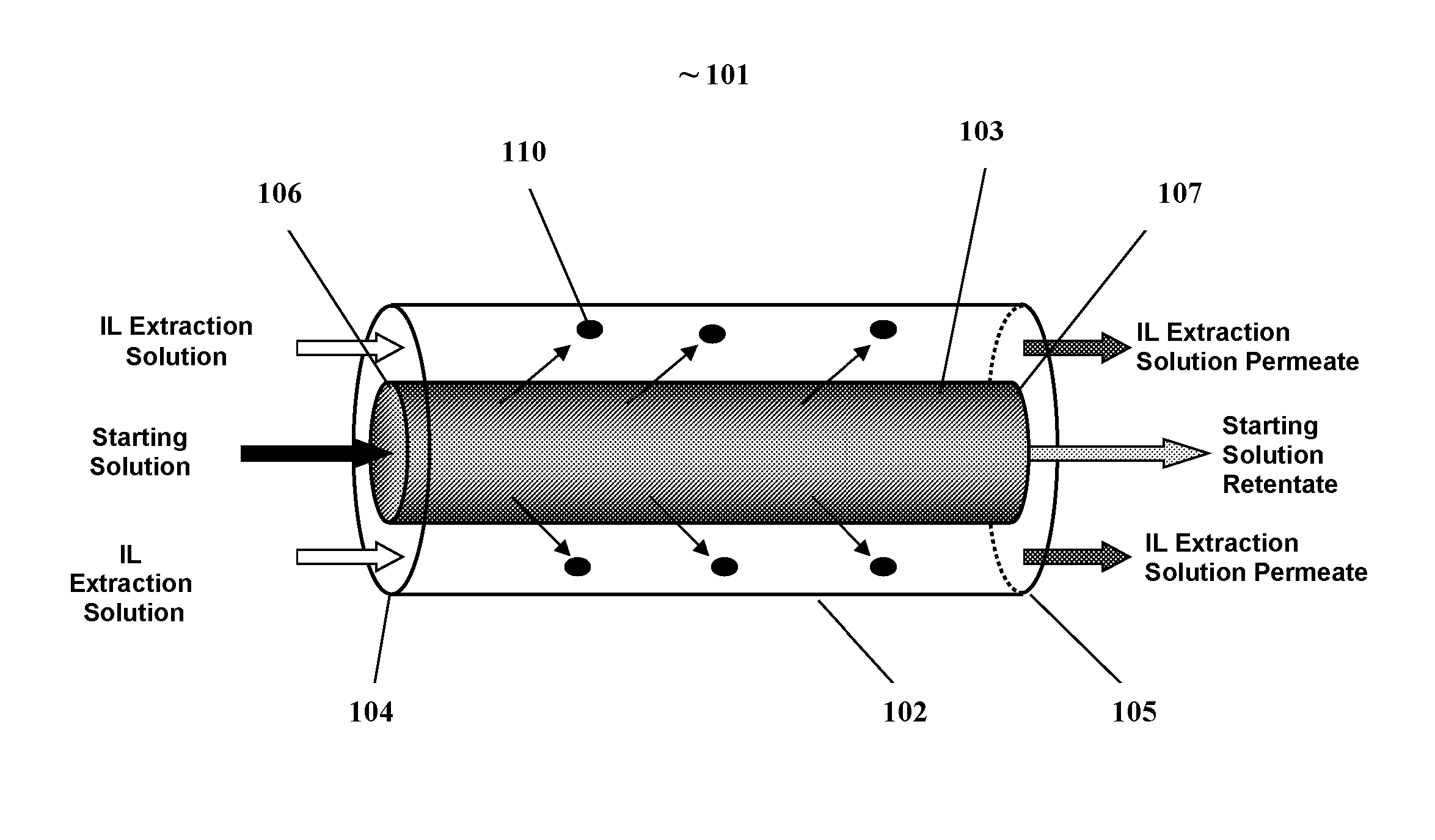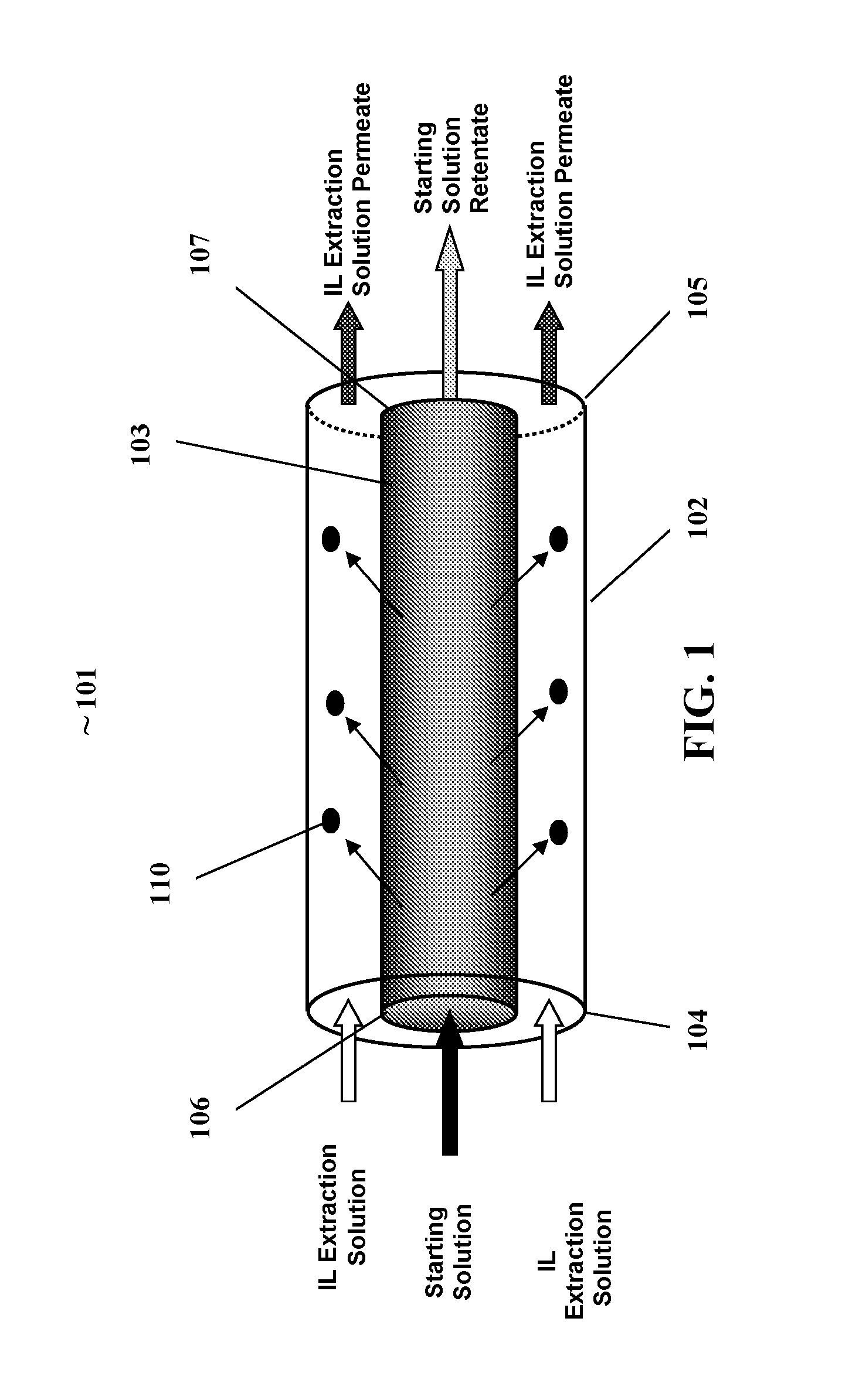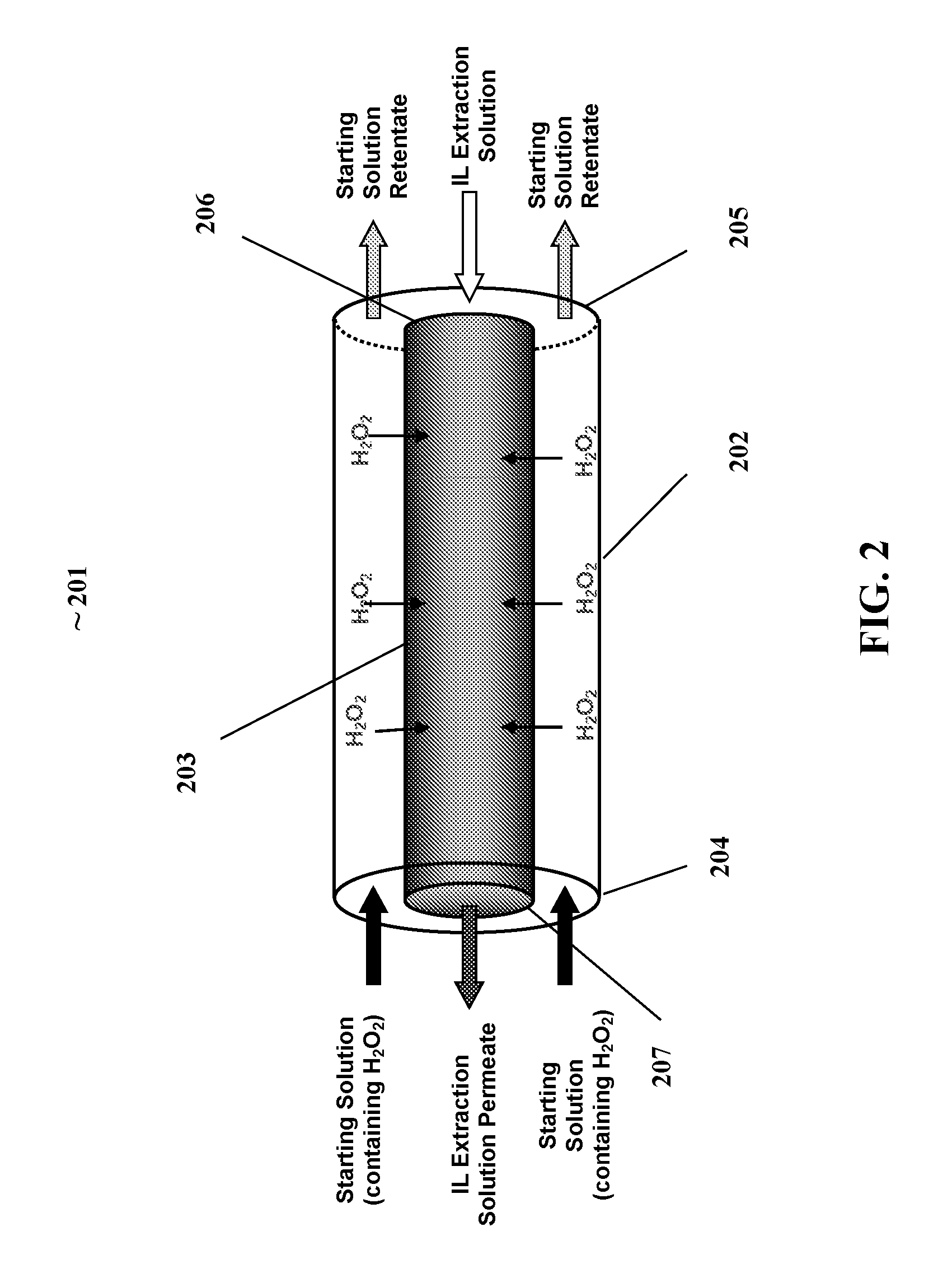Membrane contactor assisted extraction/reaction process employing ionic liquids
a membrane contactor and ionic liquid technology, applied in the field of functionalized membrane contactor extraction/reaction system, can solve the problems of large capital and energy expenses, long separation time, and complex structure of multi-phase solution, and achieve the effects of reducing the loss of aq, substantial energy savings, and improving separation efficiency
- Summary
- Abstract
- Description
- Claims
- Application Information
AI Technical Summary
Benefits of technology
Problems solved by technology
Method used
Image
Examples
example i
Bio-Based Separation System
[0073]FIG. 3 illustrates one embodiment of a membrane contactor reactor for separating a biobased product such as ethanol from a fermentation broth. The illustrated membrane contactor reactor (MCR) 301 generally comprises an outer reactor cylinder (ORC) 302, having an ORC inlet 304 and an ORC outlet 305; and a coaxial cylindrical membrane contactor CCMC 303 positioned within the ORC 302. The CCMC having an inlet end 306 end and outlet end 307. The ORC further having a CCMC inlet 308 and CCMC outlet 309. The CCMC inlet 308 connected to the inlet end of the CCMC 306, the CCMC outlet 309 connected to the CCMC outlet end 307. The ORC 302 is an enclosed hollow cylinder with the exception of the ORC inlet and outlet, and CCMC inlet and outlet.
[0074]The ORC inlet 304 and outlet 305 provide fluid communication between the outside and inside of the ORC. The CCMC inlet 308 and outlet 309 provide fluid communication between the outside and the central aperture of the...
example ii
Hydrogen Peroxide Separation System
[0085]FIG. 2. illustrates a preferred embodiment of a membrane contactor reactor for the extraction of hydrogen peroxide from a working solution. The illustrated membrane contactor reactor (MCR) 201 generally comprises an outer reactor cylinder (ORC) 202 having an inlet end 204 and an outlet end 205; and a coaxial cylindrical membrane contactor CCMC 203 positioned within the ORC 202. The CCMC 203 also having an inlet end 206 end and outlet end 207.
[0086]The inlet end of the ORC 204 receives a stream of starting solution from a starting solution supply means (not shown), and the inlet of the MC 206 receives a stream of extractant from an extractant supply means (not shown); whereby the dissolved hydrogen peroxide present in the starting solution permeates through the membrane into the extractant creating a extractant permeate solution (containing hydrogen peroxide) which exits the outlet of the CCMC 207. As the starting solution passes through the r...
example iii
Hydrogen Peroxide Extraction / PO Production System
[0099]More specifically one embodiment of the invention relates a system for the epoxidation of propylene to propylene oxide. Propylene oxide (PO) is reactive intermediate product used to produce a wide range of industrial and commercial products such as polyether polyols, propylene glycol, alkanolamines, glycol ethers, etc.
[0100]The extractant for use as the extraction / reaction medium for PO production from hydrogen peroxide can be a number of ionic liquids known in the art. Theoretically any IL solvent system can be used as both the extracting solvent and the reaction medium require the following properties: (1) solubility of the target species (i.e. H2O2) but not the starting solution (i.e. WS) to enable extraction from the starting solution; (2) tunable environment for enhancing catalytic activity and selectivity; (3) low volatility to enable removal of the PO product and byproducts; and (4) low overall solvent, reactant, and prod...
PUM
 Login to View More
Login to View More Abstract
Description
Claims
Application Information
 Login to View More
Login to View More - R&D
- Intellectual Property
- Life Sciences
- Materials
- Tech Scout
- Unparalleled Data Quality
- Higher Quality Content
- 60% Fewer Hallucinations
Browse by: Latest US Patents, China's latest patents, Technical Efficacy Thesaurus, Application Domain, Technology Topic, Popular Technical Reports.
© 2025 PatSnap. All rights reserved.Legal|Privacy policy|Modern Slavery Act Transparency Statement|Sitemap|About US| Contact US: help@patsnap.com



